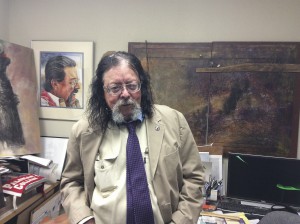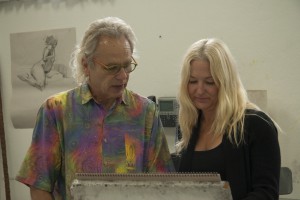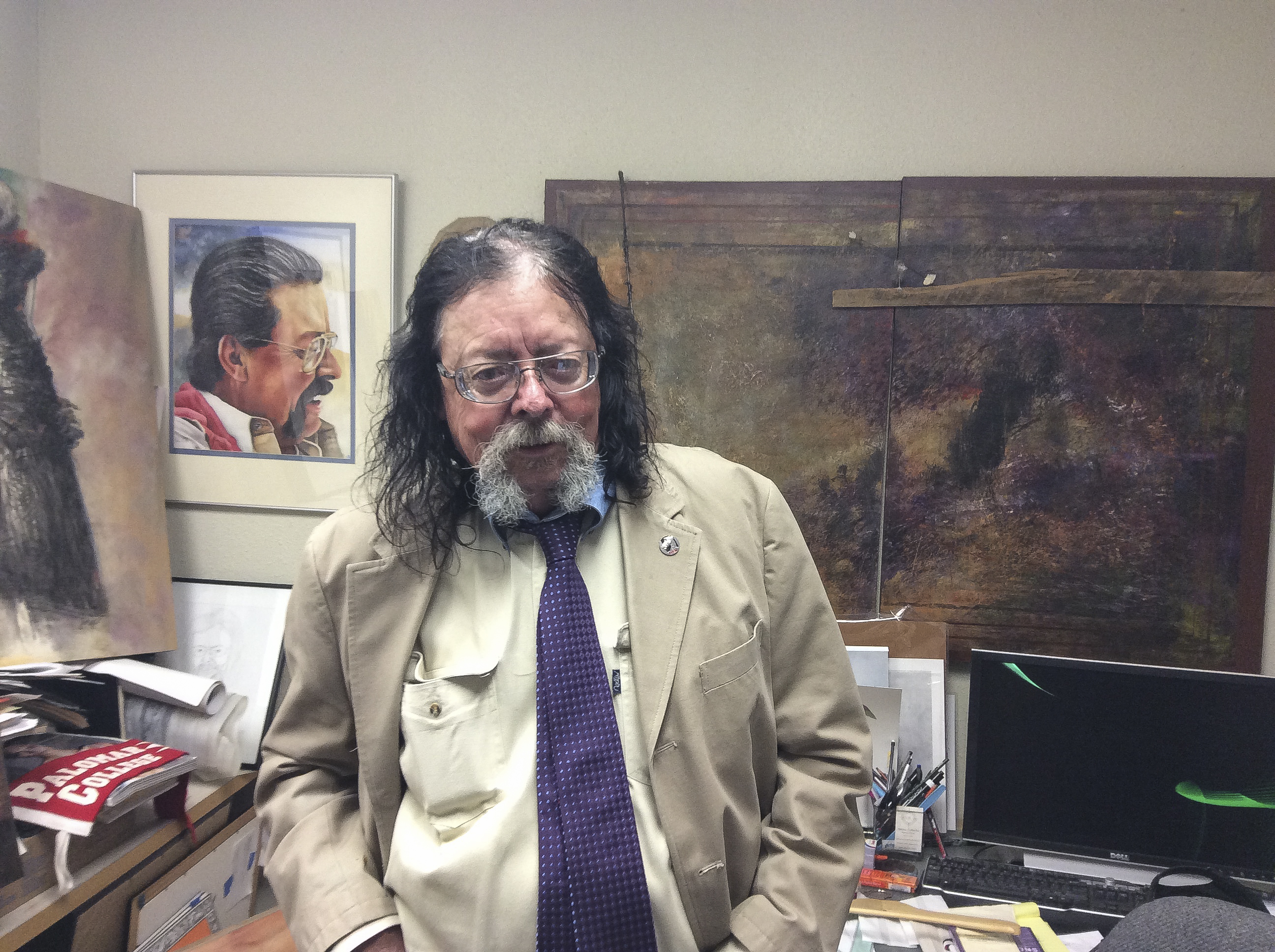In their early life, they cultivated their own creativity. Then they cultivated creativity in the lives of others. Now, for these cultivators, it’s time to look at retirement.
Two of Palomar’s most well-known art professors are retiring this semester. Doug Durrant and Michael Steirnagle are both experts in their perspective fields. Durrant has been teaching at Palomar for 44 years, and Steirnagle for 24 years.

Durrant formally trained in graphic design before becoming a professor, and was also a freelance graphic artist. His work has been used by Pacific Southwest Airlines and various automotive companies.
Automotives and aviation were a part of his early life, and both had influence over his career path.
“When I grew my dad built race cars. So I was always tied into garages and aviation, and I still am today. I still do aviation advertising in Texas, everything from paint designs to logos,” Durrant said.
Steirnagle’s experience was more based as an illustrator than a graphic artist.
“I’ve done album covers for Jerry Garcia, Lynyrd Skynyrd, The Commodores, and a lot of other people like that,” Steirnagle said.
Durrant holds his art and the art of others in high regard as a cultural base, and as a tool to keep life fulfilling.
“I think we all really do understand that we carry on the world’s culture through our art, or our music, or our film, or our literature. It really is the strongest part of the world,” he said. “Material things can be fleeting, politics can be fleeting, but the cultural base is unique. It’s a privilege that we have that.”
Where Durrant’s philosophy behind teaching art is more that of a celebration of culture, Steirnagle’s is a co-improvement practice between teacher and student.
“What I found out was teaching was really a way of improving my own work. My philosophy of teaching was teaching what I already knew and what I wanted to learn, to keep moving ahead rather than just teaching the same stuff year after year. So teaching became ultimately rewarding and helped the quality of my own work,” he said.
This practice is a valuable one, due to artists creating work in the confines of their own comfort zone. Once you start teaching a class, it becomes a valuable soundboard to discuss your work.
In Steirnagle’s words, “artists work in vacuums, so you tend to be in your own head a lot and sometimes you lose touch with people and what they are looking for. You don’t get feedback. You don’t have the sounding board to talk about your work, so when I started to teach, my classes became my sounding board.
“I would discover that I wasn’t actually doing some of the things that I was teaching,” Steirnagle added. “So it was a two-way street, I learned as much as they did and at the end of every semester, I would try to tell my students that I hope you learned as much as I did.”
Durrant’s teaching career started in 1964 at San Diego State University.
“I started teaching college in 1964 at San Diego State. Then I went to Texas and taught three years at Sul Ross State University and I was art teacher and rodeo sponsor,” Durrant said.
His career at Palomar College started in 1971, back when North County was more agriculturally-based and Palomar was much smaller.
“All the schools I worked at are great schools, but Palomar had a great President, Frederick Huber, and I was hired by Dean Howard Brubeck. It was a very strong cultural place at that time,” Durrant said.

What he has taken away from his experience as a professor is, “how valuable we are to each other and that there is not that much that separates any of us. Also, why have to continually battle the people that try to put us down. That’s what I’ve learned over the years of teaching.”
The class that he has always gotten the most out of teaching is still Drawing 1, particularly with students who think they can’t draw. This is due to the amount of care he puts into this class showing that anyone can draw.
This ties into his statement that, “Everyone see’s with their own eye and their own heart, and it’s valuable.”
Durrant ignites student’s careers in the arts; Steirnagle encourages them to continue it.
“Going off to a four-year school is very expensive for many of our students, but I encourage people not to think that way,” Durrant said. “If you want to pursue art, don’t let economics get in your way. Don’t think of it as an easy job. It’s the hardest job there is, it’s also the most rewarding job there is.“
Durrant said he hopes his retirement will help him come full circle.
“As the natives say, ‘I’ll make the full circle.’ I’ll go back first to Arizona on the Navajo reservation to stay a couple of days to put my head back on,” Durrant said, adding that he is still recovering from his wife’s death from cancer.
“Grief and sorrow changes you,” he said.
“Then I’ll go back to my home town of Durango, it has changed completely since I was a kid in the forties. Then New Mexico, to stay on a friends ranch. Then to Texas by the Rio Grande for a rodeo reunion. So that I have made the full circle.”
Steirnagle said he sees his retirement as another step in his greater career as an artist and a teacher.
“If you’re an artist you don’t retire, you just change jobs,” Steirnagle said. “So I’m continue teaching here, if they’ll have me, with one class. I also have a gallery over on Grand Avenue, so I’ll be teaching workshops over there.”
He also see’s what is necessary for the department to run smoothly once he’s gone.
“I’m hoping they’ll hire another full-time person here. In order for the department to run more efficiently, we need to have more full-time people,” Steirnagle added.
Durrant said he holds to how valuable of an impact they have had on his life.
“As I get ready to retire I think of all the people who have passed on that have worked with me and helped me, how genuine they were and how much they cared about education for everybody. So it’s been really fulfilling.”
As for what happens here once he is gone, he hopes that, “the art department will continue to be as strong as it has been with our fine faculty. (Professor) Lily Glass is determined to see the department progress.”
On May 16 from 5 to 8 p.m. Doug Durrant and Michael Steirnagle’s work will be featured in a retirement show at the Boehm Gallery.
Image Sources
- news.Professor Doug Durrant. Joel Vaughn/The Telescope: Joel Vaughn/The Telescope | All Rights Reserved
- A&E.Featured Retiring Artists: Joel Vaughn/The Telescope | All Rights Reserved

